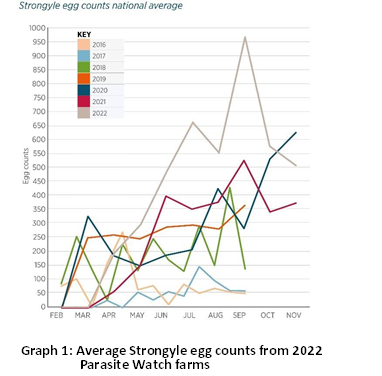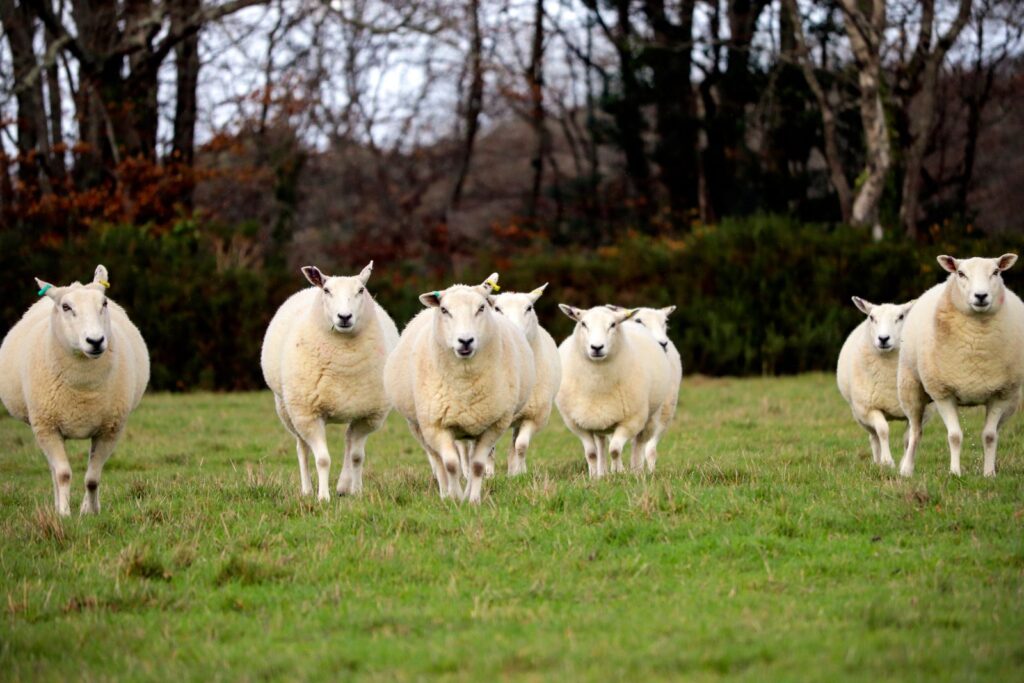Farmers warned to monitor worm burdens following record peaks in 2022
29th March 2023
Farmers must be on their guard for roundworms in sheep this season by regularly conducting faecal egg counts, as data from last year revealed record peaks in worm egg counts despite a hotter than average summer.
Now in its eighth year monitoring worm egg counts through a network of 26 sentinel farms across the country, the Zoetis Parasite Watch Scheme has found last year’s counts to be the highest to date.
Average worm egg counts peaked at over 950 eggs per gram (epg) in September, with levels above 250 epg seen from the end of April until the end of recording in November.
Sheep farmer Peter Baber from Weir Park Farm in Exeter, Devon, one of the farms involved in the scheme, believes the higher than average egg counts last year may have been the result of grazing pressures due to a shortage of grass and nutritional stress.

Average strongyle egg counts from 2022 Parasite Watch farms.
“We did more drenching than we thought we would have to do, in such dry conditions, which we found surprising,” he remarked.
“Because we were so severely affected by the drought, we think sheep were grazing very tight and picking up the worms. Because of the nutritional pressures, it perhaps compromised their ability to mount an immune response to control the worms,” he added.
Mr Baber lambs 900 ewes, raising Exlana, Suffolks, SufTex and Texels. He conducts faecal egg counts (FEC) in each group every two weeks, as well as FEC reduction tests 10-14 days post-drenching to check if the product has worked.
From an animal performance and resistance point of view, he encouraged farmers to regularly monitor the worm burden of their flock.
“Worm burdens can be very localised and change from year to year, so you can’t rely on a drenching plan based on when you have done it in the past,” he added.
Veterinarian Ally Ward shares advice
Zoetis vet Ally Ward said the weather has a significant impact on worm patterns.
“”Last year’s weather was exceptionally hot, and yet we still saw consistently high worm egg counts throughout the year. The average peak came in September when the rain arrived.
“Twenty years ago, it would have been unusual to see worm egg counts peaking in the autumn, but because our seasons are less defined now, and our autumn and winters are warmer and wetter, that is what we have been seeing,” she explained.
Ms Ward said worm burdens are also heavily influenced by changes in grazing practices, the status of incoming stock and past treatment history of the animals on the farm.
Alongside FECs, she urged farmers to also use growth rate data, body condition scores, clinical signs and a farm’s previous parasite history to determine whether treatment is necessary.
“Tests should be conducted in lambs over six weeks old. If test results reveal low worm egg counts and no treatments are given, a further test should be taken two weeks later to ensure nothing is missed.
“Results should also be shared with a vet or animal health advisor, who can help interpret the results and decide on the best treatment,” she advised.
To sign up for free to the Zoetis Parasite Watch Scheme and to receive alerts for your area, visit www.parasitewatch.co.uk

